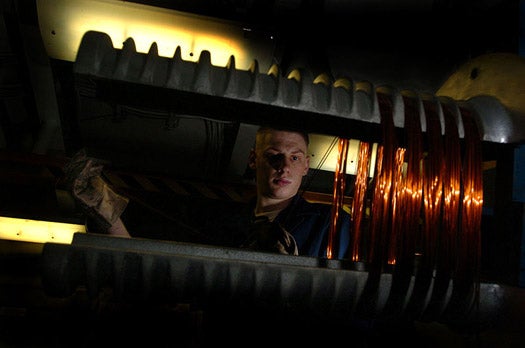German Lab Generates the Strongest Magnetic Field Ever Created
Call it another victory for German design. Researchers in Dresden have set a new world record for the strongest magnetic...

Call it another victory for German design. Researchers in Dresden have set a new world record for the strongest magnetic field ever manufactured at the High Magnetic Field Laboratory Dresden (HZDR). Using a two-layer, 440-pound copper coil the size of a water bucket, they managed to coax 91.4 teslas from their creation for just a few milliseconds, surpassing the previous record of 89 teslas.
That’s a lot of teslas. Your standard high-power copper coil would be torn apart at something like 25 teslas, the researchers say. That’s because the magnetic field and the electric current that creates it work at cross purposes at higher energies. The current running through the coil generates the magnetic field, but the magnetic field pushes back against the electrons flowing through the coil. The stronger the current, the more the magnetic field pushes back, and once the current crosses a certain threshold the magnet will quite literally tear itself apart.
But we need bigger, badder magnets. The higher and more precise magnetic fields we can produce in the lab, the better we can test and characterize the properties of the materials we create, things like superconductors that shuttle electrons around with zero resistance. In order to make their magnet withstand the pressures of 90-plus teslas, the HZDR team wrapped the coil in a specially fabricated corset made of high-tensile fibers usually used in body armor.
That gave them a small coil with enough strength to stand up to 50 teslas for a brief two-hundredths of a second. So they did what seems natural and added another magnet, wrapping a second, 12-layer copper coil also swathed in a fiber corset around the first. This larger magnet can only withstand a 40 tesla field, but combined with the other 50 teslas the combo magnet can achieve more than 90 teslas.
The magnet has already drawn interest from materials scientists around the globe, and the HZDR aims to produce another six magnets over the next few years to accommodate all the researchers who want time on the devices. The record replaces one set by American researchers at Los Alamos National Labs that had stood for years.